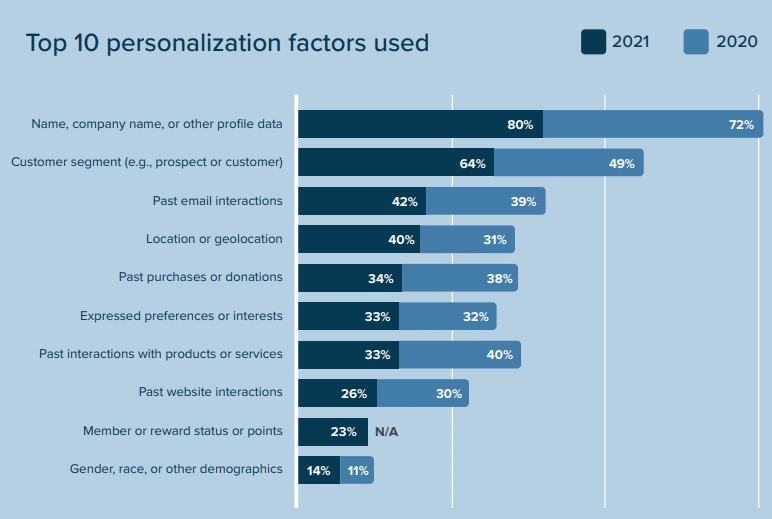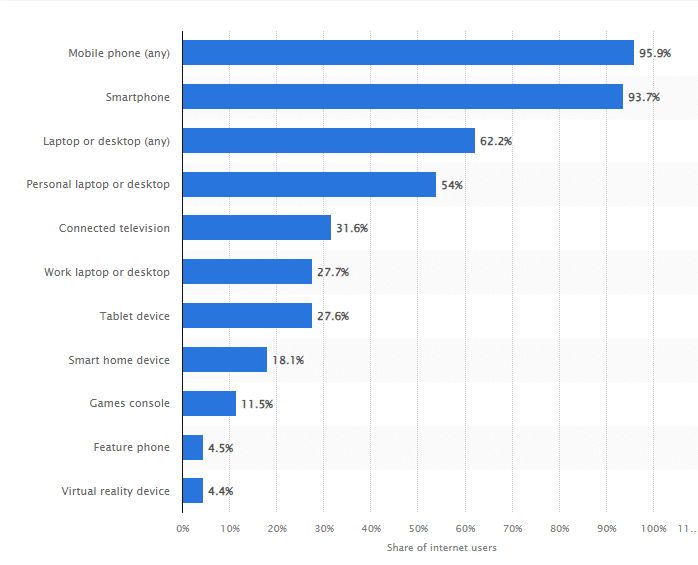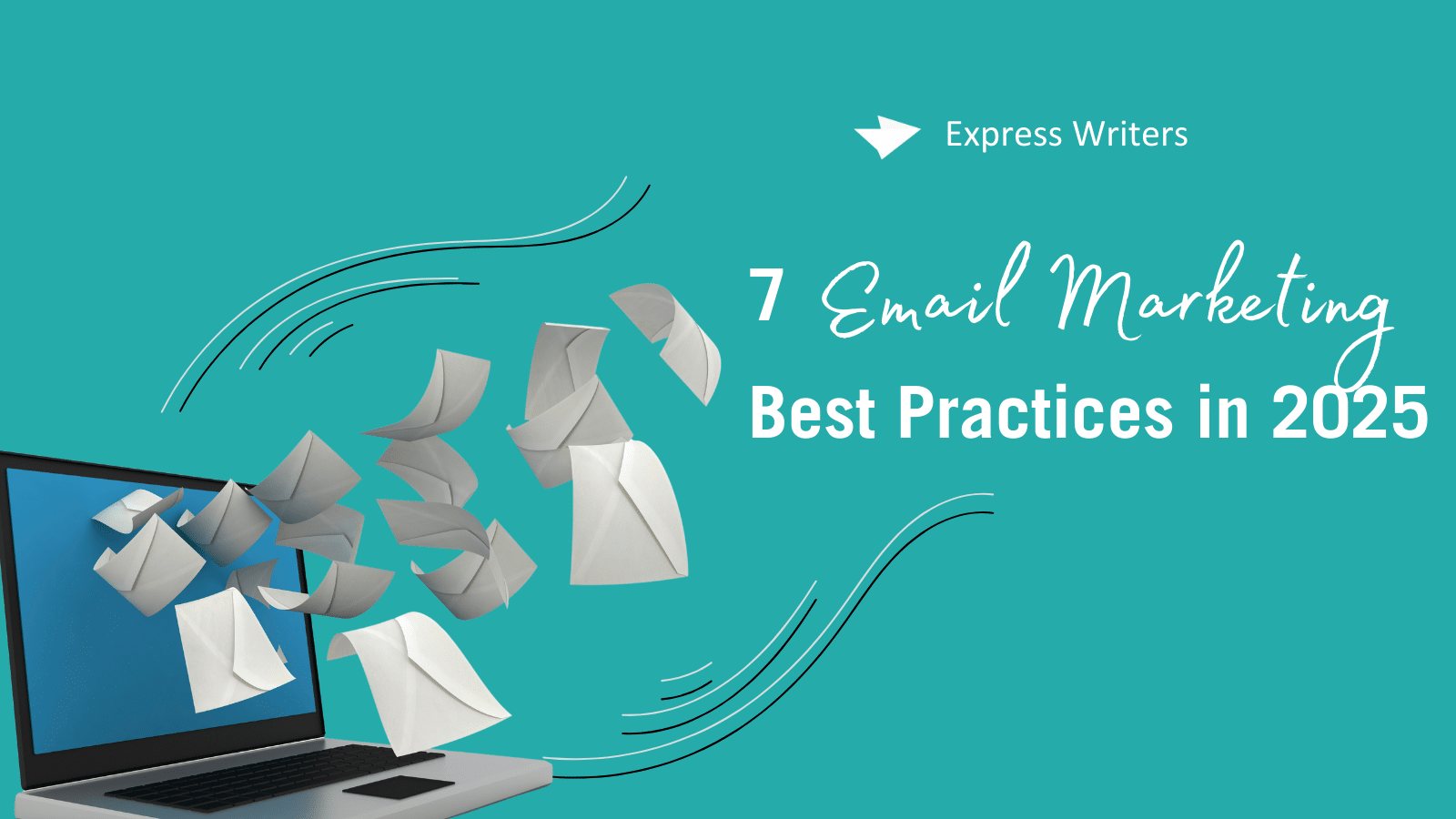Some people think email marketing is outdated. However, today’s trends indicate that it is still one of the most popular and effective digital marketing tools.
About 59% of consumers report that email marketing influences their purchasing choices. Additionally, 50% of buyers make a purchase based on a marketing email each month.
Each day, people send and receive over 361 billion emails. Email marketing trends show this figure will surpass the 400 billion mark by 2026. With that in mind, how do you ensure that your emails stand out from the rest and that your message gets across?
Email marketing involves sending promotional messages to recipients to educate, inform, or convince them to take a specific action. This popular digital marketing strategy uses promotional emails, newsletters, company announcements, and transactional emails.
Below, we discuss why email marketing is still relevant in 2025. You will also learn about the latest email marketing benchmarks and how to use them to create effective campaigns.
Is Email Marketing Still Relevant in 2025?
The best marketers are always interested in knowing where and how they can reach their target audience. Despite today’s email marketing changes, available data suggests email inboxes are still packed with unlimited business opportunities.
Email marketing is the leading digital marketing channel among marketers in 2025. Part of its appeal lies in its outperformance of SEO in enhancing the customer experience and increasing engagement.
Other reasons why you should use email marketing in 2025 include:
- Access to a Huge Audience: About 90% of Americans past the age of 15 use email. Close to 90% of these users check their inboxes at least once a day.
- Greater ROI: You can expect an average ROI of up to $42 for every $1 directed toward email marketing.
- Unrivaled Targeting: Email marketing gives you the best opportunity to own your audience. You can use email marketing to connect and engage with your target audience directly. In contrast, the algorithm determines who sees your content when using social media.
These stats point to the undeniable benefits of email marketing. It allows you to reach a wider audience, develop stronger relationships, and enjoy higher returns on your marketing spend.
Top Email Marketing Best Practices in 2025
Want to boost your chances of creating the most effective digital marketing campaigns in 2025 and beyond? Follow these email marketing best practices.
1. Know Your Audience
To build strong customer relationships, you need in-depth knowledge of your audience. You must understand their pain points, interests, and needs to create email copy that resonates and connects with them. Knowing your target audience will help segment them based on their demographics, email engagement, geography, and past purchases.
Segmenting consumers simplifies the work of crafting relevant and personalized messages for recipients. Personalized emails have a 29% open rate. About 76% of consumers expect to receive personalized communications from brands looking to build a closer relationship with them.
Most business owners have a good idea of the type of people they target with emails. They are likely to be similar to those who interact with the entity. However, this is not enough. You need to get more specific. Businesses with limited resources can develop loyal customers by focusing on a smaller audience.

2. Use Compelling Subject Lines
The subject line is the first thing your readers see when an email hits their inbox. They use it to instantly choose whether to send the email to their spam folder, open, discard, or ignore it. Around 64% of readers use subject lines as the basis to open emails. Email subject lines play an essential role in the success or failure of campaigns.
Create compelling subject lines using the following optimization tips:
- Always use title case
- Use open-ended questions
- Keep it around 6 words (40 characters) in length
- Choose something relevant to your audience
- Avoid any overused words or those associated with spam, like “guarantee” and “free”
- Include a number
If you struggle to find ideas for catchy subject lines, you can use some of the existing AI Text Generators.
Even with the above tips in practice, it can be hard to predict which subject line will produce the best results. Consider using hard data to increase the chances of acing your subject lines. A/B testing can help you identify the types of subject lines that resonate with your subscribers.

3. Optimize CTAs
The call-to-action (CTA) is the most important element of a promotional email after the subject line. Once the email lands in the recipient’s inbox, you want them to take a specific action. You can use the CTA to direct readers to your site and get them to sign up for a service or make a purchase.
When crafting a call-to-action, consider the main goal of your email. As you compose the email, ask yourself what the reader stands to gain by clicking on the CTA. This helps you craft a CTA that motivates readers to take action.
Follow the tips below to create a compelling CTA:
- Keep it brief, simple, and concise – 3 words (like “sign up now”) is enough
- Add a touch of personalization
- Use a button format, as it is easier to click on
When creating a compelling call-to-action, you want to ensure the reader moves on to the next step of the sales funnel as quickly as possible. Avoid confusing the reader or creating unnecessary questions to ensure a swift transition.
A compelling CTA naturally boosts click-through rates and other vital email metrics.
4. Optimize Your Emails for Mobile
Many people open and read emails on their mobile phones. An estimated 96% of users access the internet using mobile devices. This is greater than the 62% that use a desktop or laptop for internet access. As such, you should always design your emails with mobile users in mind.
Use these tips to optimize your emails for mobile:
- Make sure that all critical information is visible on the screen with minimal scrolling
- Always use a responsive design compatible with various screen sizes
- Choose adequate spacing and sizing for any clickable elements, including links and buttons
- Use scannable and concise content
- Reduce load times by only using optimized media
Before you send out any emails, be sure to test them on various mobile devices. Various email software services offer mobile emulators to help you see how your emails appear on different devices.

5. Send Emails at the Perfect Time
If you want your recipients to open, read, and engage with your emails, you must send them at the right time. You can increase the likelihood of more people engaging with your content by sending emails when recipients are most active. This can be during particular points of the day or week.
According to research findings, Tuesday, Wednesday, and Thursday are the best days to send emails. Send your emails at 4 a.m. to boost open rates. But if you want higher click-through rates, you will get better results by sending emails at 6 a.m.
However, it is unlikely that anyone will want to check and engage with your emails this early in the day.
To identify the best day and time to send emails, find out your audience’s time zones, preferences, and behavior patterns. You want to choose a time that best suits your recipients. For the best chances of success, schedule your emails to go out between 8 a.m. and 5 p.m.

6. Take Advantage of Email Marketing Automation Tools
Automation can supercharge your email marketing efforts.
When starting, you may be able to send and respond to customer emails manually. However, it is impossible to manually send hundreds or thousands of emails as your email list grows.
You can use automation to keep up with email marketing design, copy, and analytics. Send emails based on preset timelines and user behavior with the help of an effective email marketing automation tool. This will free you to focus on content creation and strategy formulation.
You can send two main types of automated emails to your audience:
- Broadcasts: These are one-time automated emails sent to specific groups of recipients in your email list.
- Autoresponders: Email Autoresponders ensure readers receive emails at the right time in two ways. They can be programmed to send emails after users take specific actions, like making a purchase or signing up, or at predetermined time intervals, like weekly newsletters.
7. Analyze and Improve
Email marketing takes a lot of time and effort. You don’t want to waste precious time doing something that is not working. Tracking performance metrics can ensure that you are always moving forward, boosting efficiency, and improving your tactics at every step.
Some of the important metrics you should keep a close eye on include:
- Open Rate: This refers to the percentage of emails your readers open. The open rate can tell you whether your audience likes your topics, subject lines, and email timing. A good open rate can be anywhere between 17% and 28%.
- Bounce Rate: This metric shows the proportion of emails that could not be delivered. A high bounce rate can indicate that you are using invalid addresses or your emails are labeled as spam. Track bounce rates and remove invalid addresses from your email list to maintain healthy open rates.
- Click-Through Rate: Click-through rate tracks the number of recipients clicking on any links in your emails. It’s a measure of the effectiveness of your CTAs and overall content. This metric tells you the type of content that your subscribers like. It also helps you identify high-engagement recipients.
- Conversion Rate: This performance metric records the proportion of subscribers who completed a specific desired action, such as signing up or making a purchase. A reasonable conversion rate is somewhere between 2% and 5%.
- Unsubscribe Rate: As the name suggests, this metric tracks the percentage of recipients who unsubscribe from your email list. A healthy unsubscribe rate should be below 0.5%.
Transform Your Email Marketing Campaigns
Email marketing helps you build solid and lasting relationships with your customers and subscribers. To ensure the best outcome, you must create relevant, quality content, compelling subject lines, and CTAs and keep improving by analyzing critical metrics.
Are you looking to transform your email marketing campaigns in 2025? Check out our email marketing copy services to find out how we can help.
